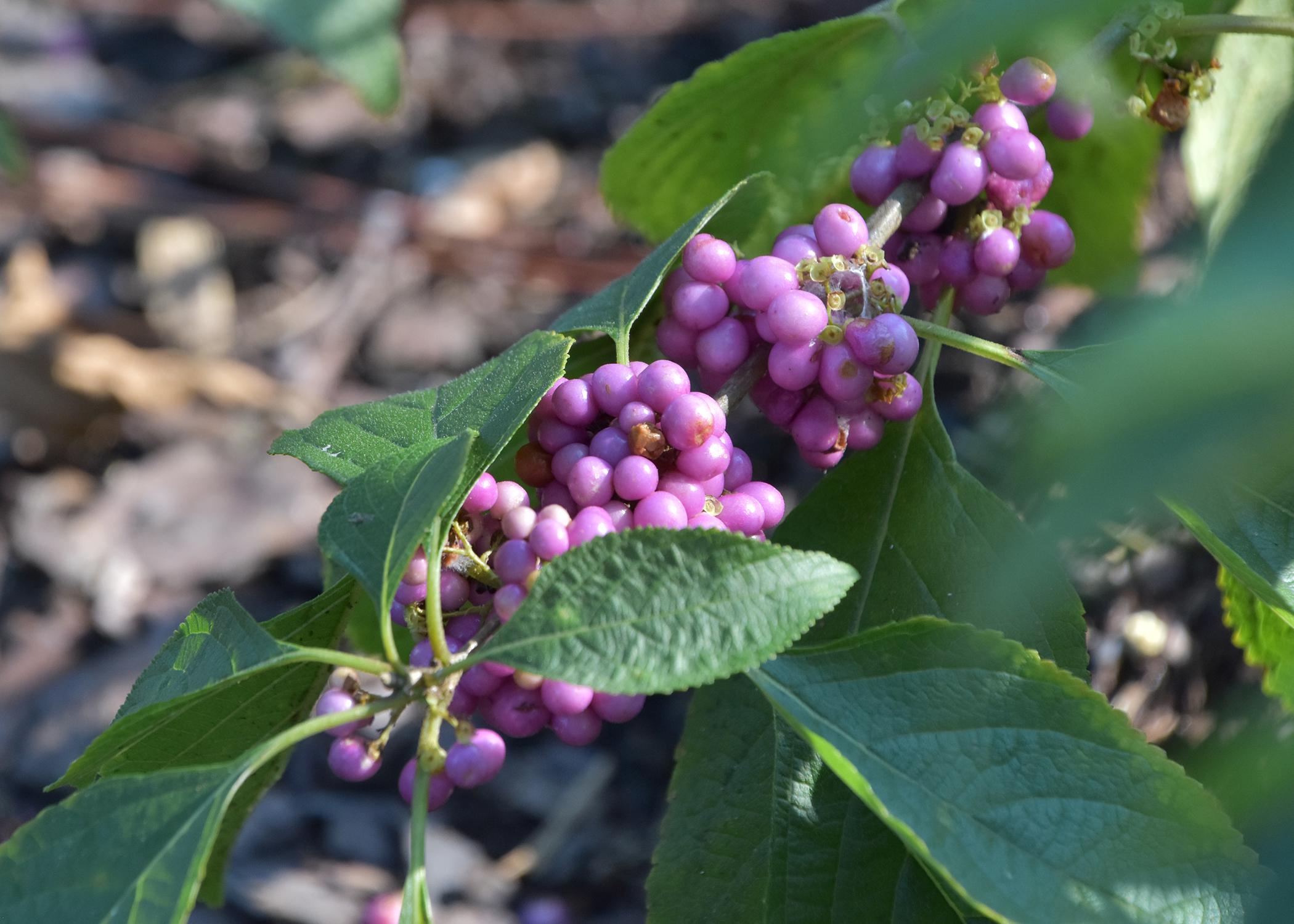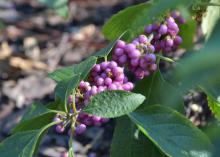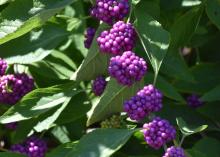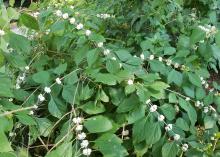Information Possibly Outdated
The information presented on this page was originally released on September 13, 2021. It may not be outdated, but please search our site for more current information. If you plan to quote or reference this information in a publication, please check with the Extension specialist or author before proceeding.
American beautyberry is excellent yard addition
Lately, I’ve been browsing through gardening social media pages, and I’ve noticed lots of questions about this shrub that seems to have appeared out of nowhere with its beautiful purple berries.
I love when people notice our native Callicarpa americana for the first time. Its common name, American beautyberry, makes sense once you have seen the plant.
American beautyberry thrives best as an understory shrub in full sun or partial shade. That’s why we notice these shrubs growing naturally along the edges of wooded areas. If it’s planted with a western exposure, some afternoon shade reduces the summer heat load on the plant.
This native shrub has been named both a Mississippi Medallion and Louisiana Super Plants selection.
The purple berries shine in late summer. Clusters of berries are held tightly at the leaf axils all up and down the slender branches. Berry production can be so great that the branches arch down to the ground.
American beautyberry is a low-maintenance plant selection for the landscape. It is a moderately sized plant with an open growth habit that needs only light pruning or thinning if desired. If you like, you can prune it to about 6 inches high each spring to keep it at a fuller, more compact size.
There are a couple of selections with different colored berries that are must-haves for the landscape.
Alba is a selection that produces loads of pure-white berries in such abundance that they seem to drip off the arching branches.
Welch’s Pink beautyberry produces light-pink flowers in the early summer and finishes with very pretty pastel-pink berries in late summer through fall. This variety was found in east Texas and thought to be a hybrid of purple- and white-berried plants.
Welch's Pink doesn’t grow as big as the native beautyberry. In my garden, I haven’t pruned it yet, and this plant has grown to about 4 feet tall and wide after five years.
There are other interesting facts about American beautyberry. This shrub is an alternative host of crape myrtle bark scale, and you should probably use systemic treatments for these insects as you would for crape myrtle trees.
You can make beautyberry jelly. Said to be a forager’s dream, it finishes with a light-purple tint. I haven’t made this jelly, but there are lots of recipes online.
I have read recommendations that rubbing the leaves on the skin could be a natural mosquito repellent. I would use caution if you tried this in case it causes dermatitis allergic reaction.
Birds and other wildlife love the berries and will spread the seeds. I like the surprise as “volunteer” beautyberries pop up in random places around the landscape.





